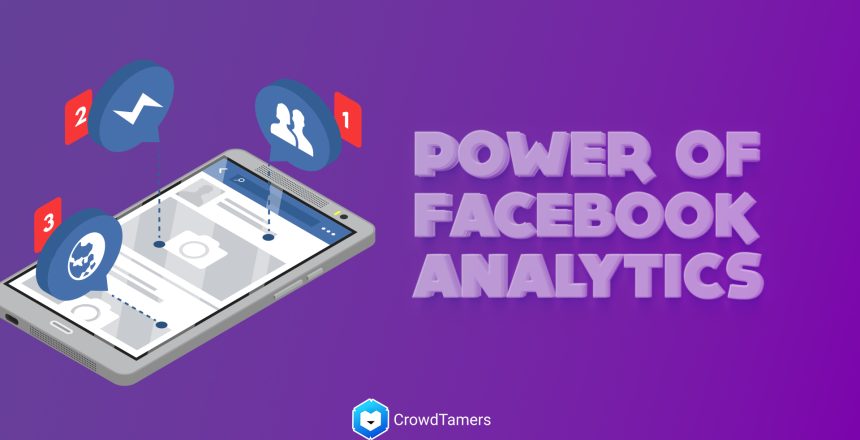As a startup founder, you need to be confident that your idea resonates with your target audience and has the potential to gain traction in the market. Facebook, with its vast user base, provides an unparalleled opportunity to test your assumptions, gather valuable insights, and make data-driven decisions to refine your startup’s strategy.
In this article, we’ll explore how you can leverage Facebook Analytics and optimization to validate your startup idea.
Understanding Facebook Insights for Your Startup
Facebook Insights is a powerful analytics tool that provides a wealth of data about your Facebook Page’s performance and audience. By understanding and utilizing this data, startups can make informed decisions to optimize their Facebook marketing efforts.
Key metrics to monitor in Facebook Insights include:
- Reach: The number of unique users who saw your posts or ads.
- Engagement: The total number of likes, comments, shares, and clicks your posts receive.
- Page Views: The number of times your Page was viewed by users.
- Page Likes: The total number of users who have liked your Page.
- Audience Demographics: Breakdown of your Page’s followers by age, gender, location, and language.
To access Facebook Insights, navigate to your Facebook Page and click on the “Insights” tab at the top. From there, you can explore various sections like “Overview,” “Posts,” and “People” to gain a comprehensive understanding of your Page’s performance.
For startups validating their ideas, Facebook Insights can help answer critical questions, such as:
- Is my target audience engaging with my content?
- What types of posts or ads resonate best with my audience?
- Are my marketing efforts reaching the right demographics?
- How does my Page’s growth and engagement compare to industry benchmarks?
Measuring the Success of Your Facebook Marketing Efforts
To determine the effectiveness of your Facebook marketing campaigns, it’s essential to establish key performance indicators (KPIs) and track them consistently. Some important KPIs for startups include:
- Conversion Rate: The percentage of users who take a desired action, such as making a purchase or signing up for a newsletter, after clicking on your Facebook ad or post.
- Cost per Acquisition (CPA): The average cost of acquiring a new customer through your Facebook marketing efforts.
- Return on Ad Spend (ROAS): The revenue generated for every dollar spent on Facebook advertising.
- Click-Through Rate (CTR): The percentage of users who click on your ad or post after viewing it.
- Engagement Rate: The percentage of users who interact with your posts through likes, comments, or shares.
To measure these KPIs effectively, startups can use various tools and techniques:
- Facebook Ads Manager: Track the performance of your paid ad campaigns, including metrics like reach, clicks, conversions, and cost per result.
- Google Analytics: Integrate your Facebook marketing efforts with Google Analytics to track website traffic, user behavior, and conversions originating from Facebook.
- UTM Parameters: Add UTM (Urchin Tracking Module) parameters to your Facebook ad URLs to track the performance of specific campaigns, ad sets, or ads in Google Analytics.
- A/B Testing: Conduct split tests on your Facebook ads or posts to determine which elements (e.g., copy, visuals, targeting) yield the best results.
Conversion Tracking with Facebook Pixel
Facebook Pixel is a powerful tool that allows startups to track user actions on their website and optimize their Facebook ad campaigns for better performance. The Pixel is a snippet of code that you install on your website to collect data on user behavior and conversions.
Here’s a step-by-step guide to setting up and using Facebook Pixel:
- Create a Facebook Pixel:
- Go to the Events Manager in your Facebook Ads account.
- Click on the “Connect Data Sources” button and select “Web.”
- Choose “Facebook Pixel” and click “Connect.”
- Name your Pixel and enter your website URL.
- Install the Pixel on Your Website:
- Copy the Pixel code provided by Facebook.
- Add the code to the header of your website, just above the closing
</head>tag. - If you use a website platform like WordPress or Shopify, you can use their built-in integration or a plugin to simplify the installation process.
- Set Up Event Tracking:
- Determine the key actions you want to track on your website, such as page views, button clicks, form submissions, or purchases.
- Use the Event Setup Tool in the Events Manager to set up event tracking for these actions.
- You can either use Facebook’s pre-defined event codes or create custom events using parameters.
- Verify Your Pixel Implementation:
- Install the Facebook Pixel Helper browser extension to ensure your Pixel is firing correctly and tracking events as intended.
- Test your event tracking by performing the desired actions on your website and checking if they appear in the Events Manager.
- Create Custom Audiences and Lookalike Audiences:
- Use the data collected by your Pixel to create Custom Audiences based on user actions, such as website visitors, product viewers, or customers.
- Create Lookalike Audiences to find new users who share similar characteristics with your best customers, helping you expand your reach and validate your startup idea.
- Optimize Your Ad Campaigns:
- Use the data gathered by your Pixel to optimize your Facebook ad campaigns for specific conversion events.
- Set up Conversion Campaigns in the Ads Manager, choosing the event you want to optimize for (e.g., purchases, sign-ups, or leads).
- Facebook’s algorithm will automatically show your ads to users most likely to complete the desired action, improving your ad performance and ROI.



